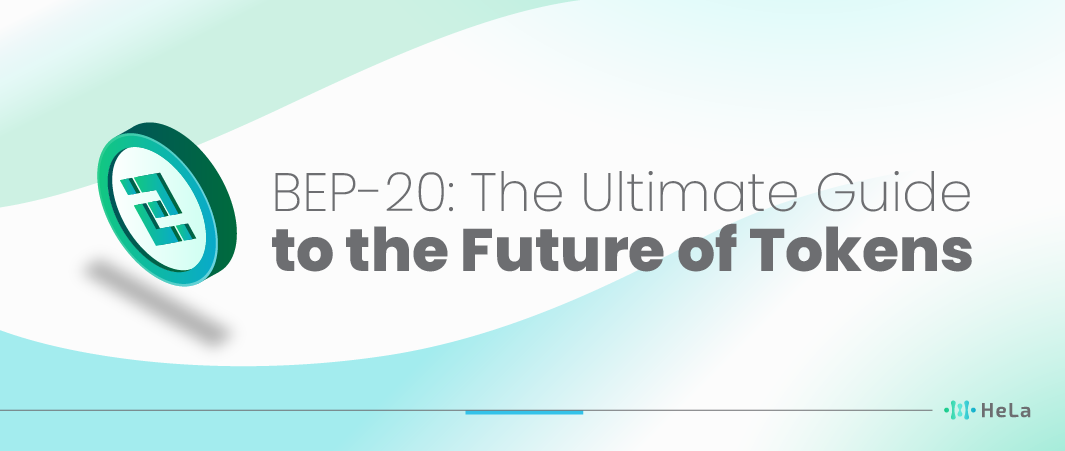In the ever-evolving landscape of cryptocurrencies, token standards play a pivotal role in ensuring interoperability, security, and functionality. One such standard that has gained significant attention is BEP-20, native to the Binance Smart Chain. This article aims to provide a comprehensive guide to understanding what BEP-20 is, its features, and why it is essential for anyone involved in the crypto space.
BEP-20 is not just another token standard; it’s a cornerstone for a plethora of decentralized applications (dApps) and projects built on the Binance Smart Chain. Whether you are a developer looking to launch a new token or an investor seeking to understand your investment better, grasping the intricacies of BEP-20 can provide you with valuable insights.
What is BEP-20?
BEP-20 is like a special rulebook for tokens on Binance Smart Chain, which is a faster and cheaper alternative to Ethereum. Think of it as the 20th suggestion in a series of improvements for Binance’s blockchain. This rulebook, or standard, tells tokens how to behave if they want to work smoothly in the Binance Smart Chain world.
Also Read: What is ERC? Understanding the Essence in Blockchain
Imagine it’s like a language that tokens need to speak to be understood here. BEP-20 sets out the words and phrases they should use and how they should interact with the Binance Smart Chain community. It’s like the user manual for tokens in this digital neighborhood, making sure they all play nice and work well together.
Why is BEP-20 Important?

The importance of BEP-20 can’t be overstated. It serves as the backbone for tokens on the Binance Smart Chain, ensuring that they adhere to a standardized set of rules. This standardization is crucial for several reasons:
1. Interoperability
- BEP-20 tokens work smoothly with other BEP-20 tokens, making it simple for them to cooperate within the same system.
- This compatibility ensures that BEP-20 tokens can easily exchange value and data with one another.
- It’s like they speak the same language, allowing them to collaborate seamlessly in a shared digital environment.
- This kind of interoperability promotes a thriving and interconnected ecosystem of tokens, simplifying transactions and interactions among them.
2. Security
- The standard incorporates security features to help protect against potential risks.
- For instance, it allows for the temporary halt of transactions if any unusual or suspicious activity is detected.
- This means that if something doesn’t seem right during a transaction, the system can stop it temporarily for investigation, helping to safeguard your financial activities.
- These security measures aim to provide you with peace of mind and protect your financial interests by preventing unauthorized or suspicious transactions from going through unnoticed.
- Essentially, it’s like having a watchful eye over your transactions, ready to hit the pause button if something fishy pops up.
3. Adoption
- Standardized tokens are user-friendly for exchanges, wallets, and dApps, making them simpler to work with.
- This simplicity boosts the chances of these tokens being accepted and used by a larger audience.
- Exchanges and wallet providers find it easier to incorporate standardized tokens into their systems.
- This increased compatibility can lead to more people adopting and using these tokens in everyday transactions.
Features of BEP-20 Tokens

BEP-20 tokens come with a range of features that make them versatile and functional. Some of the key features include:
1. Minting and Burning
BEP-20 tokens, which are digital assets built on the Binance Smart Chain, have the unique capability to be generated (minted) or removed from circulation (burned), enabling flexible changes to their overall supply. This feature allows token creators and projects to adapt and manage their token quantities as needed, adding or subtracting tokens when circumstances require it, which can be crucial for maintaining a balanced ecosystem.
2. Ownership Transfer
In the world of digital tokens, like the BEP-20, it’s important to have a way to pass ownership of these tokens from one person to another. This transfer of token ownership is crucial, especially when it comes to governance models. It’s like handing over the keys to a car – it allows different individuals or groups to make decisions and have a say in how things are run. So, in simpler terms, the ability to transfer BEP-20 tokens is like the foundation that keeps the whole system of rules and decision-making in place.
3. Decimals
BEP-20 tokens, like cryptocurrencies, can be broken down into smaller pieces, and this division is determined by the number of decimal places supported by the token. Essentially, it’s like how a dollar can be divided into cents, but in the world of BEP-20 tokens, this division is adjustable, allowing for more flexibility in transactions and making it easier to deal with different values of these tokens.
4. Customization
Developers have the flexibility to enhance BEP-20 tokens by creating their unique functions and features, tailoring them to suit specific needs and purposes. This customization allows these tokens to be more adaptable and versatile, making them a preferred choice for various applications within the BEP-20 ecosystem.
How to Create a BEP-20 Token

Creating a BEP-20 token is like crafting a digital asset on the Binance Smart Chain, and it’s not too tricky if you’ve got some experience with smart contracts and Solidity, the programming language used. First off, you’ll need to create a smart contract that follows the BEP-20 standard, which is like a rulebook for tokens on the Binance Smart Chain. It defines how your token should behave and ensures compatibility with various wallets and exchanges.
Also Read: 6 Emerging Blockchain Layer-1 Projects in 2023
After you’ve got your smart contract ready, the next step is deploying it on the Binance Smart Chain. Think of it as giving life to your token. You’ll need a wallet that supports BSC for this part. Once your contract is live, it’s a good idea to verify the code to make sure it meets the BEP-20 specifications. This step is like a quality check to ensure your token functions as expected. Once everything checks out, you’re ready to launch your BEP-20 token, and people can start trading it. It’s kind of like opening a new store – your token is now in circulation on the Binance Smart Chain!
Conclusion
Understanding BEP-20 is crucial for anyone involved in the Binance Smart Chain ecosystem. Whether you’re a developer, investor, or simply a crypto enthusiast, knowing the ins and outs of this token standard can provide you with a competitive edge. It’s not just about understanding a set of technical specifications; it’s about grasping how these rules and features contribute to creating a more secure, interoperable, and functional environment for digital assets.
As the world of cryptocurrencies continues to expand, standards like BEP-20 will play an increasingly important role in shaping the future of digital assets. By adhering to a set of well-defined rules, BEP-20 tokens ensure that the Binance Smart Chain remains a robust and reliable platform for the development of decentralized applications and financial products. So the next time you come across a token on the Binance Smart Chain, you’ll know that if it’s a BEP-20 token, it’s built on a foundation of standardization and functionality.
Disclaimer: The information provided by HeLa Labs in this article is intended for general informational purposes and does not reflect the company’s opinion. It is not intended as investment advice or recommendations. Readers are strongly advised to conduct their own thorough research and consult with a qualified financial advisor before making any financial decisions.

Joshua Soriano
I am a writer specializing in decentralized systems, digital assets, and Web3 innovation. I develop research-driven explainers, case studies, and thought leadership that connect blockchain infrastructure, smart contract design, and tokenization models to real-world outcomes.
My work focuses on translating complex technical concepts into clear, actionable narratives for builders, businesses, and investors, highlighting transparency, security, and operational efficiency. Each piece blends primary-source research, protocol documentation, and practitioner insights to surface what matters for adoption and risk reduction, helping teams make informed decisions with precise, accessible content.
- Joshua Soriano#molongui-disabled-link
- Joshua Soriano#molongui-disabled-link
- Joshua Soriano#molongui-disabled-link
- Joshua Soriano#molongui-disabled-link

